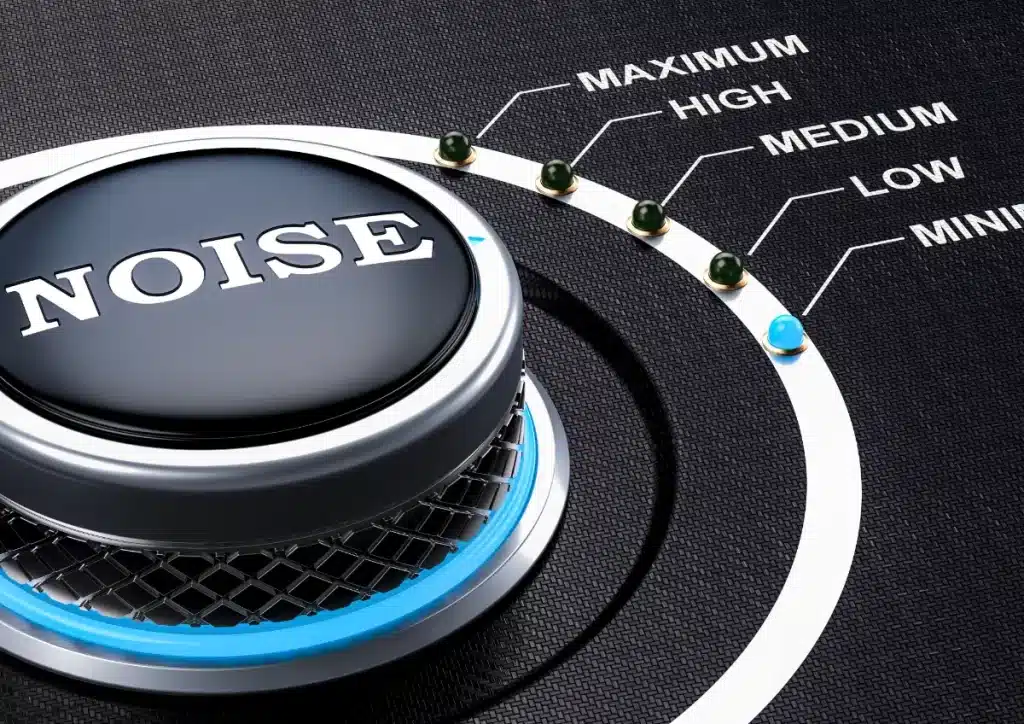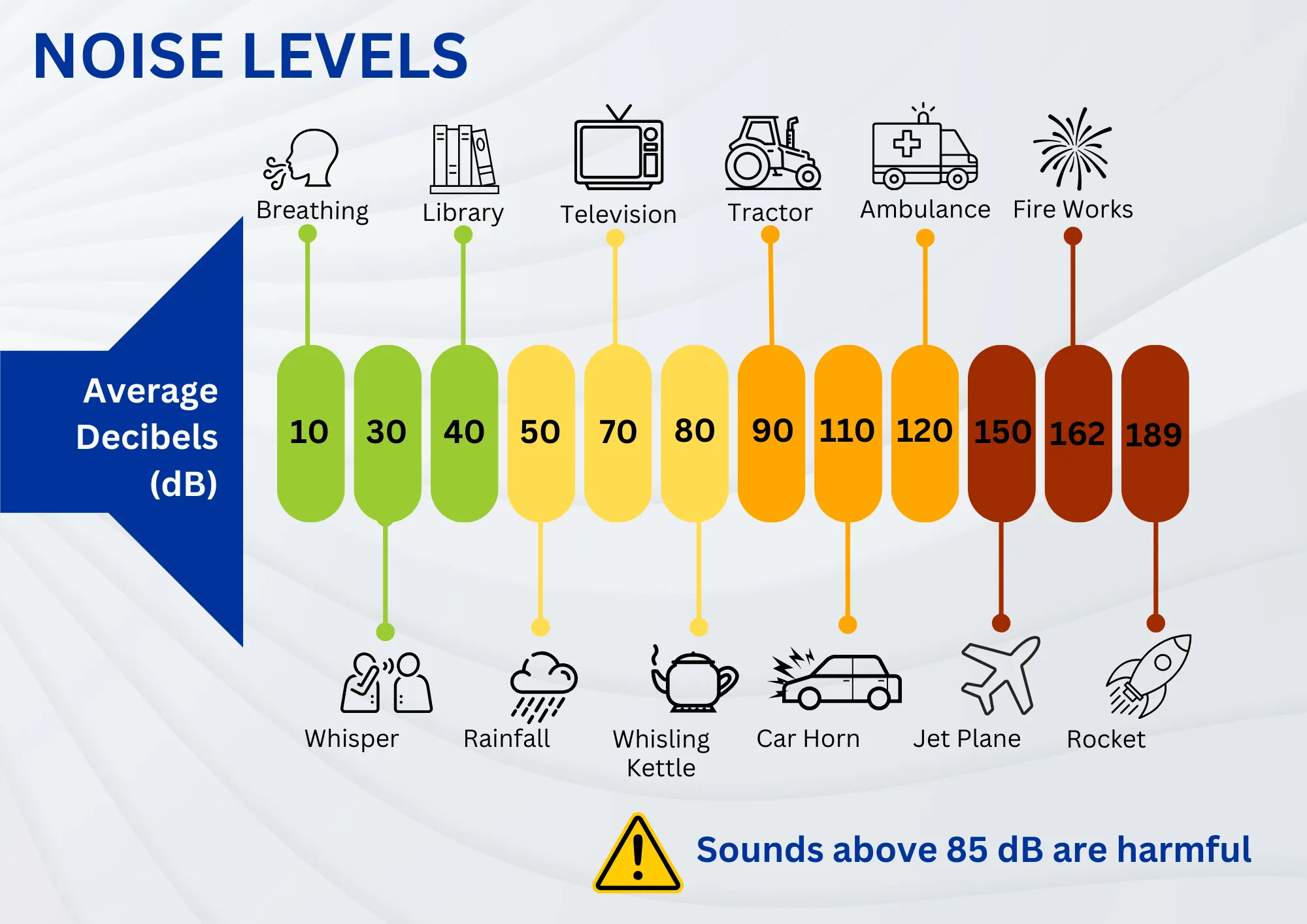Noise Induced Hearing loss. How loud is too loud?

In today’s fast-paced world, noise has become an unavoidable part of our daily lives. From Melbourne’s bustling city streets to the constant hum of machinery of the neighbourhood construction, we are surrounded by sounds that can impact our hearing health. As an audiologist, I’ve witnessed firsthand the consequences of prolonged exposure to loud noise.
Many people are quick to acknowledge the damaging effects of loud impact sounds, such as explosions, rifle shots, or chainsaws. They are right to do so, as these sounds are very unpleasant and do physically hurt when we are standing nearby. However, it is important to recognise that consistent exposure to loud sounds over time can also have a lasting negative impact on our ability to hear clearly. These sounds can come from hammers, some kitchen appliances, aeroplanes, the gym, or loud background music from restaurants and bars.
An audiology professor once used this analogy: We all have a bucket that we fill with water. If we turn on the tap at full blast with its high water pressure, we can fill that bucket very quickly. Similarly, if we turn the same tap on and off in sporadic intervals at the same pressure, we will eventually fill the bucket, although it will take a longer period of time. Ultimately, at the end of the day, both buckets will be filled. While no analogy is perfect, the filled bucket represents the point at which we subjectively notice the noise damage, and the water filling it symbolizes the accumulation of noise damage over time.
As an audiologist, we often see individuals that have worked in industries with noise exposure, although the worker may not always be in close proximity to the source of loud output. Some of our clients with noise induced hearing loss include office workers and managers who move in and out of noisy areas daily, experiencing short exposures as they commute from the car park to the office. Others are workplace inspectors who visit bars and restaurants to assess the health and safety of the kitchens.
No one is immune to noise damage. It can happen at any age if our ears are not protected.
Noise Induced Hearing Loss
Noise damage can occur at any age. It is one of the leading causes of hearing loss among the 466 million people worldwide who have been diagnosed with moderate to severe hearing loss. The World Health Organisation’s research has estimated 1.1 billion young people between the ages of 12 – 35 are at a significant risk of hearing loss due to exposure to noise in recreational settings, such as music, concerts and listening to music through ear buds at a loud volume.
Noise Induced Tinnitus
When the delicate inner structures of our ear, called hair cells of the cochlea, are damaged it results in not only hearing loss but also tinnitus. Tinnitus is the subjective experience of sound that you hear in your head or your ears, yet it does not have an external sound source. Sometimes it can be temporary after a loud rock concert, other times it is longer lasting and persistent. First signs of tinnitus might be you looking around in your house for that mosquito or electrical disturbance that doesn’t exist. It is typically a buzzing, ringing, whistling, roaring or humming sensation. Dr. Gayla Poling from the Mayo Foundation for Medical Education & Research reported 90% of those with tinnitus have hearing loss.
Noise Induced Sound Sensitivity
In some cases an individual can become very sensitive to loud sounds and cause them to withdraw from social settings, family gatherings and certain shopping centres. This can be a result of a term called “recruitment” in the audiological analysis of your hearing system. It occurs when we have noise damage in our ears and the structures of the inner ear do not have the same firm integrity and strength as it did in the past. So, what used to only be loud sounds causing an impact on these structures, a sound of a lower volume can now cause significant distress and discomfort. Imagine a rock concert and the lead guitarist jumps off the stage and lands in a sea of fans with the hands all held up. With the hundreds of fans, they can effortlessly support the weight of the guitarist. However, if there is only 50% of the fans in the audience, when the guitarist jumps, the weight is felt and he may in fact miss and hit the floor. Ouch. The guitarist is the sound, the fans are the inner ear structures called “hair cells”. Our hair cells are typically neatly arranged and tightly packed in our inner ear however with noise damage over time, they are sporadic and dispersed or even missing entirely, resulting in our ears being very sensitive to every day sounds such as doors slamming or a child crying.
How loud is too loud?
Sound is measured in a unit called decibels, noted as dB. The National Institute for Occupational Safety and Health Criteria Document recommends that the maximum exposure time in the workplace at 110 dBA is one minute and 29 seconds, and at 120 dBA the maximum exposure time would be only 9 seconds.
Safe Work Australia notes that noise must not be exposed above 85 decibels (as an average) over eight hours at work. These can be lawn mowers, certain kitchen blenders or leaf blowers. Similar to the analogy of the bucket of water mentioned earlier, this principle varies depending on the decibel level and the duration of exposure. For example, the risk at 91 decibels over two hours is the same as 85 decibels over eight hours. Any level of noise over 140 decibels is extremely dangerous and could instantly damage hearing.
A historical study conducted by Dr. Raymond H. Hull in 1991 found that over 80% of gyms, health clubs and spas had music that was consistently played over the 105dBA level during the hour the fitness instructor was conducting their class. In 2024, in certain modern gyms the sound and music has not decreased. Instructors often have a FM transmitter to amplify their voice over the energetic music which is then on top of the music and even louder! Dr. Hull showed that sound levels in a few health clubs exceeded 120 dbA for a half an hour class. That is louder than an industrial hammer drill!

As a rule of thumb, if you cannot have a one-to-one conversation with a friend comfortably where you understand their conversation content, it is time to invest in hearing protection.
Tips for Hearing Health from the International Noise Awareness Day Campaign
1. Limit the time of noise exposure
2. Get your hearing tested to have a baseline to refer to annually
3. Invest in hearing protection
Share these tips with your friends and family. Together we can change lives.
If you have concerns about your hearing, reach out to the team at Victorian Hearing, your local, independent, and Australian owned and operated hearing clinic. With ten clinics across Melbourne, you are sure to find a friendly smile and support from the Victorian Hearing team. Call (03) 9558 8842 or book online.
